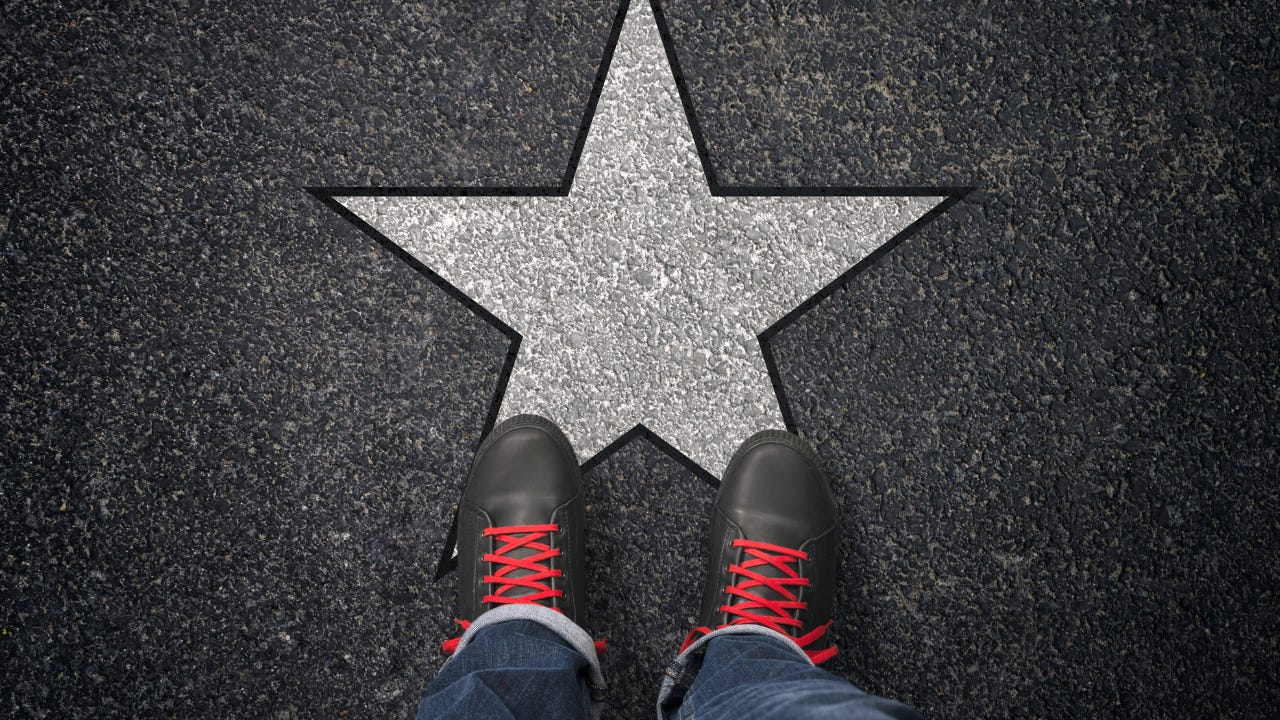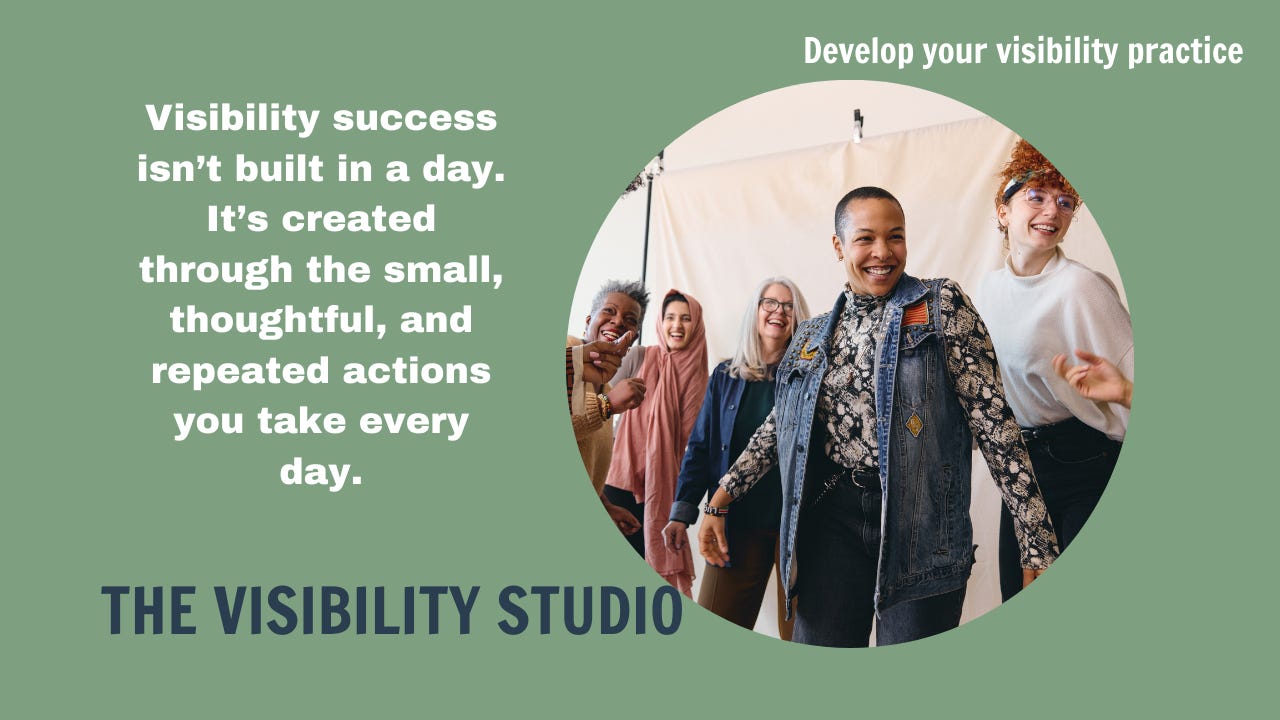What are your visibility strengths and weaknesses?
How to work with your natural style (and stop forcing what doesn’t fit)
It took me a long time to discern which visibility styles were truly mine, and which weren’t.
In the early days, the difficulty was that almost all visibility styles were triggering me in some way.
Working in environments that were noisy, filled with artificial light, and filled with constant interruptions rubbed up against my highly sensitive attunement, putting my nervous system into a state of ongoing alertness. (Little wonder I found myself exhausted at the end of each day.)
Too many meetings in a single day made the introvert in me want to find a cave and never leave again. I craved time to think, spaciousness in my calendar, quiet in my environment, and stillness in my being.
When I started running my own business, showing up in front of complete strangers on social media was like stepping onto a stage blindfolded, in front of people I didn’t know and couldn’t see. It felt exposing and unsafe.
The industry’s standards for visibility didn’t appeal to me either. They felt superficial at best, and falsely manipulative at worst.
Wading through all those external influences to find something that felt true to me took time.
And attention.
And patience.
Eventually, I realised something that changed everything:
Not all visibility is created equal.
Some forms of visibility feel energising, expansive, and deeply connected to who you are.
Others feel heavy, hollow, or performative.
Some light you up.
Others drain the life from you.
Before I recognised that this was all about how I felt about being visible, I kept looking in all the wrong places for answers.
I told myself I didn’t know enough.
That I wasn’t experienced enough, confident enough, extroverted enough, or strategic enough.
And yes, sometimes there were things I needed to learn.
But even after I learned them, the feeling of not being enough didn’t go away.
It persisted because I was still trying to fit a round peg into a square hole.
That constant effort left me with a lingering sense of insufficiency.
What I really needed to hear was this:
“You need to focus on alignment. When your work aligns with the forms of visibility that suit you best, that feeling will go away.”
Some career paths will have you interacting with clients all day long - even if you secretly dread small talk and long for quiet.
Some will require constant speaking, when you’d much rather be writing.
Some will send you travelling from place to place, when everything in you craves the steadiness of home.
When those things aren’t in alignment, it’s easy to internalise the discomfort as a personal failure, when really, you’re just working in a way that rubs up against your nature.
Over time, that kind of misalignment becomes exhausting. Visibility starts to feel like something you have to push through instead of something you can inhabit.
That’s why it’s so important to consider visibility through the lens of strengths and challenges.
Where visibility feels aligned
Take a moment to consider:
Which forms of visibility make you feel most like yourself?
Where does your voice feel clear, confident, or calm?
It might be:
Speaking on a podcast and letting your thoughts flow
Writing newsletters that feel like letters to a friend
Sharing a story on Instagram that makes someone say, “I felt that”, or
Hosting a group and knowing how to guide the energy in the room.
These are clues.
Clues that tell you which forms of visibility are aligned with your strengths.
What you’re looking for is the kind of visibility that fills you up rather than empties you out.
Where visibility feels off
Now shift your attention to the other end of the spectrum.
Where do you feel resistance?
Where do you procrastinate, overthink, or disappear?
What visibility tasks feel like pulling teeth?
These are often the places where visibility rubs up against old wounds, outdated patterns, or systems that were never designed for your voice in the first place.
Sometimes it’s a sign that something needs healing.
Sometimes it’s a signal that you’re trying to be visible in a way that doesn’t actually suit you.
Here’s an example:
Perhaps you keep telling yourself you “should” post daily on social media, but every time you try, your nervous system flares up. Your body tenses. You edit yourself to the point of invisibility. For some people, that’s enough to put them off pursuing their dreams (of running a business, of starting a movement, of becoming a commercially successful artist) entirely.
Before that happens, I’d suggest thinking about it this way:
You are allowed to drop the story that you should post daily and explore a form of visibility that feels more natural or appealing to you.
You might consider doing some block-clearing work on the form of visibility you’ve told yourself you ‘should do’, and see what arises next. (Often, block clearing moves you into a place of neutrality about the thing that once distressed you. From there, you can make a much clearer choice about how, and whether, to incorporate social media into your visibility strategy.)
Curiosity comes next.
You’re looking for the difference between visibility that feels stretchy in a good way, and visibility that feels like self-betrayal or like you’ve taken off your skin and are wearing someone else’s.
Discernment is Power
The invitation here is not to avoid all challenge or discomfort.
It’s to notice the quality of the discomfort.
Some visibility edges are growth edges. They’ll feel vulnerable but expansive.
Others are boundary violations in disguise.
A huge part of becoming sustainably visible is knowing the difference.
A Practice for You
Here’s a simple journaling prompt to take this work deeper:
What are three visibility practices that feel energising and natural to you?
What are three that feel draining, effortful, or filled with resistance?
What’s one gentle change you could make this week to move closer to aligned visibility?
You don’t need to change everything at once.
Just start by listening. To your body, your energy, your voice. They’ll show you the way.
Warmly,
Samantha xx
You don’t need to force visibility. You just need the right support to find your way through.
The Visibility Studio is where we help you do just that with practical tools, gentle structure, and space to grow into your own voice.








